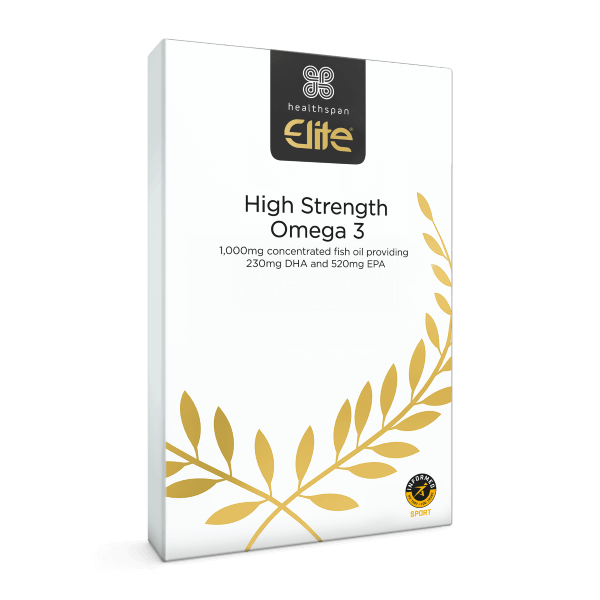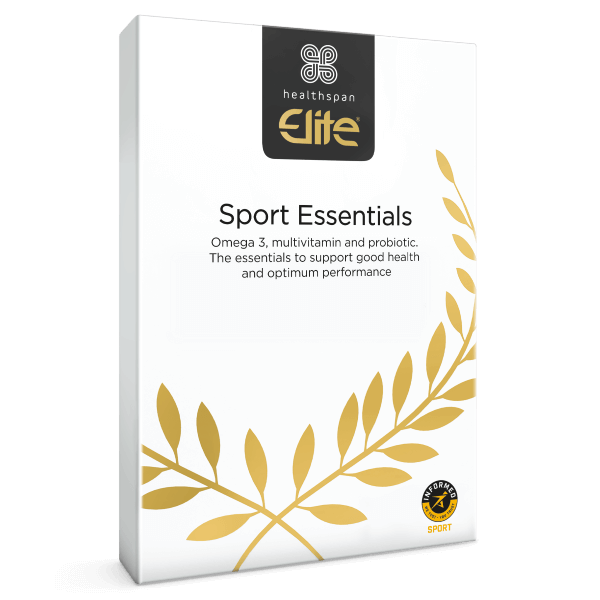A heart beat is not constant, even at rest – there are variations in the time between each beat. This is your heart rate variability, or HRV, and the size of this variability can be an indicator of your overall health and contribute to your sports performance. Sports nutritionist Rob Hobson explains.
🕒 7 min read
Heart rate variability, or HRV for short, measures the time variation between each heartbeat, also called the R-R interval.
What influences HRV?
The higher your HRV, the more fluctuation there is in the rate. The lower your HRV, the less fluctuation, meaning there is a more regular time between beats. This variation is controlled by the autonomic nervous system (ANS), which regulates involuntary physiological processes such as heart rate, blood pressure, breathing and digestion. The ANS comprises two components called the sympathetic and parasympathetic nervous systems: the fight-or-flight mechanism and the relaxation response.
Information processing occurs in a part of the brain called the hypothalamus, which receives signals from the ANS. Such alerts could be triggered by any life experience, such as an argument with your partner, poor sleep or exciting news, and the hypothalamus responds by either arousing or relaxing different functions to retain balance in the body.
However, if we are overcome with persistent negative instigators such as stress, unhealthy diet, bad relationships, lack of exercise and solitude, this balance can become disrupted, meaning we are in a constant fight-or-flight state.
Why does HRV matter?
Low HRV typically means that your sympathetic or fight-or-flight response is dominant. If you have a high HRV, then this indicates that the parasympathetic (relaxation) response is working. Research has associated a lower HRV with various diseases, including diabetes, cardiovascular disease, obesity and psychiatric disorders.
How does HRV relate to sports?
The ANS reacts several ways in response to sporting situations, such as competition and recovery from exercise. The sympathetic nervous system excites the body in stressful situations, such as during competition. The body responds in several ways, such as secreting hormones such as adrenaline and increasing heart rate and blood pressure to increase blood flow to the muscles.
The parasympathetic nervous system responds in the opposite way, by reducing heart rate and blood pressure to help facilitate recovery.
Imbalances between the sympathetic and parasympathetic nervous systems can compromise athletic performance and sometimes lead to overtraining.
Heart rate variability is the most reliable way of measuring how your ANS is functioning. Increases in HRV indicate a better recovery status and exercise adaptation. By contrast, a reduced HRV can indicate stress and worse recovery status. This is a slightly oversimplified way of looking at it, but the bottom line is that athletes with a higher HRV tend to be fitter and recover better.
HRV and stress
An athlete's lifestyle can lead to high stress levels concerning work commitments, relationships and finances. These stresses can lower HRV, and research has shown that athletes with high stress levels make smaller strength gains than those who are less stressed.1
Exercise physiologists working with athletes can use HRV to monitor systemic fatigue and recovery, by looking at the balance between the sympathetic and parasympathetic nervous systems.
The HRV score is highly sensitive and individual to the athlete, and scores can fluctuate daily.
Unhealthy individuals: 40-55
Healthy individuals: 60-70
Top endurance athletes: 90+
How is HRV used to determine performance?
Research has shown that monitoring HRV can be a helpful tool to get the best from your training. This technique of HRV-guided training means prescribing training sessions based on an athlete's HRV score. Athletes will be prescribed a more intense training session when their HRV is expected or higher than normal, but a less aggressive workout when their HRV is below normal.
One study compared HRV-guided training to pre-planned training (already designed without accounting for daily changes to HRV) for maximal running velocity. It was found that the HRV-guided training group had improved running performance.2 Further research has shown that athletes with a higher HRV score had improved VO2 max (the rate at which the heart, lungs and muscle can use oxygen during exercise) versus those with a low HRV score.3
The research suggests that HRV-guided training may improve aerobic performance compared to pre-planned training. Athletes with a higher HRV may be more sensitive to performance gains (although these gains are strictly aerobic and not strength development).
How is HRV used to determine recovery status?
Several studies have shown a relationship between HRV and recovery in athletes. These studies show that after intense training sessions, HRV is reduced. One study of national rowers found that their HRV dropped significantly when subjected to high training loads in the lead-up to competition. After lowering their training loads during competition, their HRV returned to baseline.4
These findings are reflected in numerous studies. Some have even shown a rebound effect, as after recovery from intense training HRV increased, suggesting that intense training regimes may improve HRV.5
- Train appropriately: Although regular exercise has been shown to be one of the best ways to improve your HRV, overtraining can be detrimental as the body is not given enough time to recover.
- Eat good food at the right time: Eating at regular intervals can help to maintain your circadian rhythm, and avoiding food too close to bed may help to improve sleep quality.
- Eat well: Unprocessed foods such as fruits and vegetables, nuts, and oily fish have all been associated with a higher HRV, as has the Mediterranean diet, which encompasses all these foods.
- Ditch the booze: Alcohol can lower HRV, and this suppression has been seen to linger for days afterwards.
- Sleep/wake consistently: Going to bed and waking up at the same time will get you in sync with your circadian rhythm, which is good for your HRV.
- Try intentional breathing: Research has shown that controlled breathing techniques can positively influence your HRV and target stress, which lowers your HRV.6
- Meditate: Any mindfulness technique can help to relieve the body of stress, which is going to have a positive effect on your HRV.
Can supplements help to improve your HRV?
Diet can also influence your HRV, by either elevating or reducing it. Research has indicated a few foods that have been shown to impact HRV.
Omega 3
A large study of middle-aged male twins found that those who ate a Mediterranean diet had a higher HRV than those who did not.7 Although it was unclear from the study which component of the Mediterranean diet is responsible for this positive influence on HRV, other studies have suggested that oily fish may have a crucial role to play.
Oily fish are rich in omega 3. Most studies investigating the link between these essential fatty acids and HRV have shown improvements from food and supplements.8 Although more research is needed, the results from these studies support the beneficial role of omega-3 fatty acids on autonomic tone (balancing the sympathetic and parasympathetic pathways) in humans.

Elite High Strength Omega 3 1,000mg
1,000mg Fish Oil Concentrate with increased levels omega 3 fatty acids, providing 230mg DHA and 520mg EPA
- 230mg DHA and 520mg EPA per capsule
- Supports brain, heart and eye health
- Highly distilled and sustainably sourced
Multivitamin and mineral supplements
Only a small amount of research looks at the effects of vitamins and minerals (micronutrients) on HRV. The differences in study design and various measurements used makes it difficult to draw any definitive conclusions about the effects of micronutrients on HRV. Still, overall, the strongest evidence is for vitamins D and B12, particularly where a deficiency was associated with a reduced HRV.9
This potential ability of these nutrients to influence HRV makes theoretical sense, given that they can affect both heart and brain function. Vitamin D deficiency has been associated with poor cardiovascular health outcomes,10 and low levels of this nutrient are often observed in people with depression and other psychiatric conditions.11 Vitamin B12 deficiency is associated with coronary heart disease12 and diabetes,13 which are also associated with low HRV.
Increasing research is beginning to suggest that the intestinal microbiota (the balance of bacteria in the gut) influences the activity of the vagus nerve, which is the parasympathetic nervous system's primary nerve that helps slow down heart rate.14 Nutrients such as vitamin D and iron can alter the composition of the intestinal microbiota.15,16 By their effect on the microbiome, they may change vagus nerve activity and, in turn, HRV.

Elite Sport Essentials
Three essential supplements to support good nutrition and optimum performance
- Multivitamin, omega 3 and probiotic
- Convenient daily tear strips
- Supports energy levels, recovery and digestive health
Heart rate velocity is a useful biomarker to monitor an athlete's fitness, ability to adapt and recover from training, and performance.










